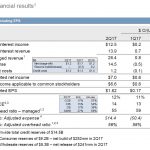A lot can change in a month.
It was just a little over a month ago that the Federal Reserve hiked rates at their March meeting. As we were coming into March, there was little expectation for the Fed to actually make a move. Sure, they told markets they wanted three hikes in 2017 at their previous hike in December; but after years of hawkish banter with only two rate hikes to show for the past nine years of ‘accommodation’, market participants had grown dubious of the Fed’s hawkish threats.
So as we came into March, odds for a rate hike two weeks later were abysmally low. But a slew of Fed speakers with hawkish assurances combined with President Trump’s Joint Address to the Union, in which many market participants inferred the oncoming of fiscal stimulus, markets were joyous and ebullient as we walked into the Fed’s March rate hike. The Dollar remained as one of the strongest currencies in the world in the first half of the month as traders factored-in a higher probability of a hike, and DXY (representing the Dollar) made an admirable if not failed push towards retaking those 13-year highs that were set earlier in 2017.
While the Fed did push rates-higher, just as they had said that they wanted to do at their prior rate move in December; the bank did not use that opportunity of strength in the American economy to warn that more rate hikes were coming. The March rate hike showed trepidation in the Fed from the fact that there was little assurance of more hikes should growth, inflation or employment strength continue to show positive gains.
The near-immediate impact to the U.S. Dollar after that March rate hike was a move of weakness; and this only put the Dollar on the ropes for some additional negative drivers that would show-up a bit later. A week and a half after that March rate hike, the Healthcare Bill in Congress was announced as a failure; and this brought to question the prospect of President Trump’s fiscal stimulus plans. A week later, missiles were fired into Syria and then an ‘armada’ of war ships were allegedly heading over to North Korea (but were actually only going to Australia for a previously planned training assignment); and this only added even more volatility to the U.S. Dollar.












Leave A Comment